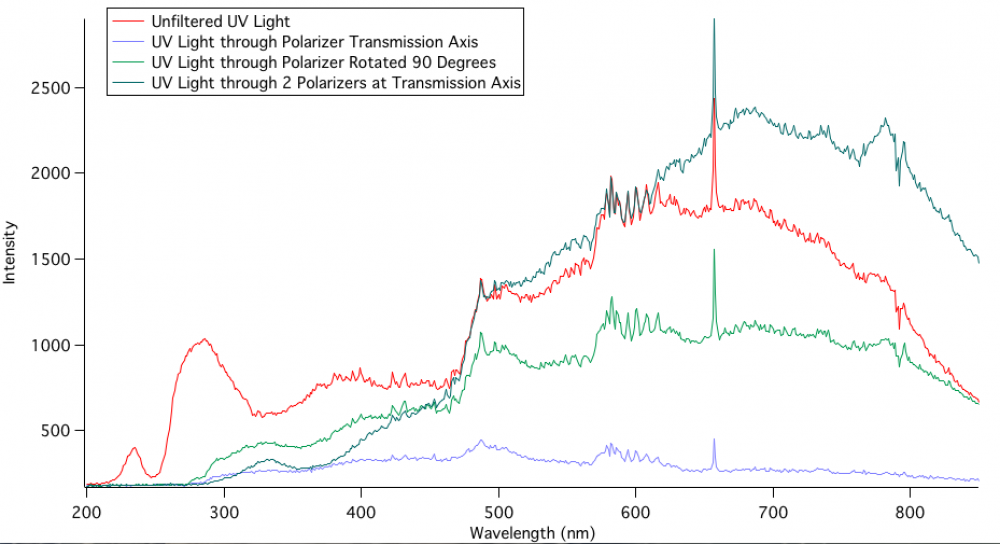The Transmission of UV Light through Polarized Film
This experiment was done to investigate how UV light transmission is affected by simple polarized film. An OceanOptics DT-Mini-2 Deuterium Tungsten Light Source was shone onto the Ocean Optics Red Tide USB650 UV sensor. Then, a polarizer was held between the light source oriented at its polarization angle and a second spectrum was obtained. Next, the polarizer was rotated 90 degrees to allow maximal transmission through the filter and another spectrum was obtained. Finally, two polarizers were held between the light source and the center oriented at their polarization axes and the final spectrum was obtained. The following graph displays the results.
There is an observed decrease in the intensity of the detected light with the presence of the polarizer oriented at any angle. However, when we orient the polarizer to maximize the filtration of the light emitted from the source, we see a significant decrease in the entire spectrum, although there is still a noticeable peak at approximately 660 nm, corresponding to the guide light from the source. The intensity of the light detected in the UV range is significantly reduced from that of the unfiltered light source. This is indicative of an effective filtration under this experimental condition.
When the polarizer was then rotated by 90 degrees to allow for an increase in the transmission of the light source, there is a noticeable increase in the intensity of the light across the spectrum. When compared to the previously discussed spectrum, there is a significant increase in the transmission of light in the wavelength range corresponding to UV light. This indicates that the polarizer, when oriented at the correct angle, can decrease the transmission of light in the UV range. There are significantly more noticeable peaks in the wavelength ranges where there were higher amounts of activity in the original spectrum.
